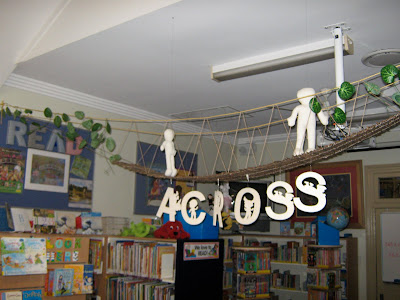

Victor Kelleher was born in London, moved to Africa as a teen, moved to New Zealand as an adult and then came to Australia in 1976 and has been here since, so we claim him as an Australian writer. He writes for all age groups up to adults, but in my prep library he is loved for his Gibblewort the goblin books. I like to watch the children read one, come back for another and another and another in a similar way that they do for Anna Fienberg's Tashi books. We need more! Seven isn't enough.
American poet, Eve Merriam was so enamoured of poetry when she was a child that she wanted everyone to love poetry in the same way. In an
article in Poetry Foundation it states that
"one of Merriam's chief aims as a writer of children's poetry was to instill in youth the same fascination with language that she experienced: " Out Loud is not only the title of a book of poems by Eve Merriam, it is also her teaching philosophy in two words. She maintains that no one learns to love poetry without hearing it read out loud . . . [and Merriam concludes that] 'if we can get teachers to read poetry, lots of it, out loud to children, we'll develop a generation of poetry readers; we may even have some poetry writers, but the main thing, we'll have language appreciators.'"
I agree with Eve Merriam. Some teachers seem scared of poetry. They need to read and recite and teach my favourite Eve Merriam poem, How to Eat a Poem. I have used it many times to teach children that poetry is not something to be feared. It should be as much fun as eating and it illustrates what Merriam is often quoted as saying 'whatever you do, find ways to read poetry. Eat it, drink it, enjoy it, and share it.'
How to Eat a Poem


















 just love Walk Two Moons, but unfortunately she does not write for the clientele of my library. There are no Sharon Creech novels in it at all. The children at the school I teach at have three libraries, and they need to be in the Junior School to access her books.
just love Walk Two Moons, but unfortunately she does not write for the clientele of my library. There are no Sharon Creech novels in it at all. The children at the school I teach at have three libraries, and they need to be in the Junior School to access her books. 






























